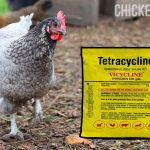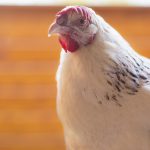Vitamin D for Chickens: Dose, Benefits & Risks
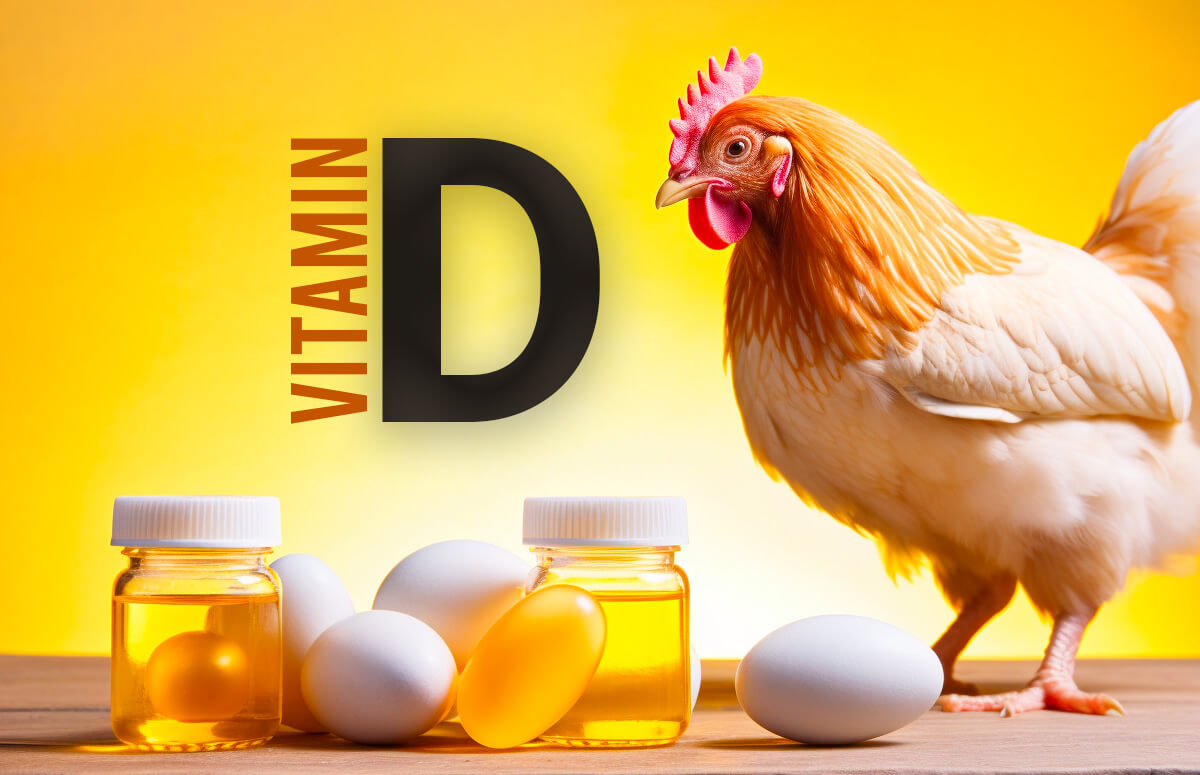

Why Vitamin D | Role & Types | Health Benefits | Dosage | When to Supplement | Deficiency | Laying Hens | Meat Chickens | Chicks | Overdose | Metabolism
Vitamin D is essential for chickens, especially laying hens and chicks. It supports skeleton development and proper immune functioning.
We explore the role of vitamin D for chickens, the health benefits, recommended doses, deficiency symptoms, supplementation, and potential risks associated with overdosing on vitamin D.
Why do Chickens need Vitamin D?
Chickens need vitamin D to grow strong bones, fight off diseases, and lay quality eggs. Birds get vitamin D3 from exposure to sunlight and D2+D3 via their diet. Deficiencies cause beak and growth deformities in chicks and fragile bones, poor egg-laying, diseases, and infections in laying hens.
Role and Types of Vitamin D for Chickens
Vitamin D is a fat-soluble vitamin required by most vertebrates, including chickens, to maintain appropriate blood calcium and phosphate levels, thereby maintaining a normal skeleton and optimal cellular and immunological functioning.
Like other animals, chickens can produce vitamin D in the presence of sunlight, and shortages are usually only observed in extreme situations. It comes in two forms: vitamin D2 (ergocalciferol) and vitamin D3 (cholecalciferol).

Vitamin D2 is a synthetic version of vitamin D that is an altered side chain generated from the plant sterol ergosterol and is commonly used as a dietary supplement in humans. However, it is notable that chickens do not utilize it well, and it is used as a supplement less frequently.
Vitamin D3, on the other hand, is a cholesterol-like molecule synthesized in the skin by a nonenzymatic process involving ultraviolet light and heat. It is considered ten times more helpful with chicks than vitamin D2.
Health Benefits of Vitamin D
Vitamin D is required for appropriate growth, skeletal development, egg and shell quality, reproduction, and overall health of chickens from hatching to aging/culling, especially in indoor-raised chickens.
Vitamin D exerts all these health benefits through the following biological mechanisms:
- Manages growth and skeletal development
- Keeps calcium and phosphorus levels stable
- Antimicrobial and immunomodulatory action
Let’s take a closer look at Vitamin D’s bioactivity.
1. Growth and skeletal development
Vitamin D stimulates the synthesis of osteocalcin, a bone protein thought to be involved in the formation of the organic-inorganic matrix.
Including vitamin D3 in the chicken’s diet can reduce the incidence and severity of tibial dyschondroplasia, a skeletal disorder common in fast-growing chickens and broilers.
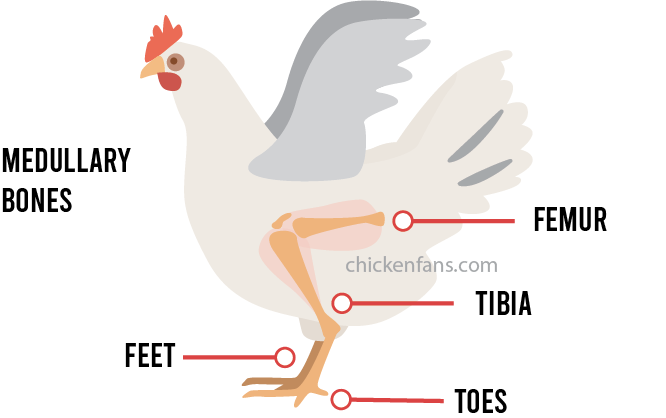
Tibial dyschondroplasia involves the abnormal development of the growth plate in the tibia, one of the bones in the leg. This leads to a loss of chondrocytes or cartilage cells in the bone’s growth plate, resulting in leg weakness, lameness, and difficulty walking.
2. Keeping calcium and phosphorus levels stable
Vitamin D is essential in calcium (Ca) and phosphorus (P) metabolism by enhancing the intestine’s ability to absorb dietary calcium and its subsequent use with phosphorus, which are necessary for bone growth and eggshell quality.
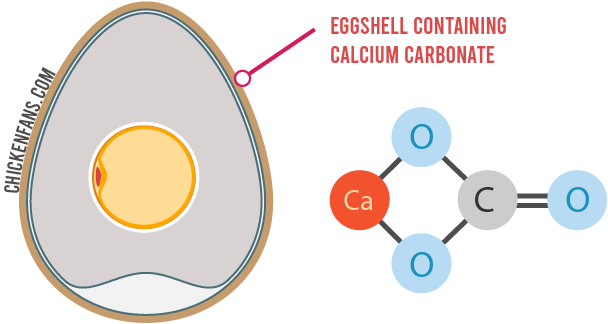
It also modulates parathyroid hormone (PTH) release and stimulates various tissues with vitamin D receptors.
In addition to calcium and phosphorus, it improves the utilization of other minerals such as manganese, iron, copper, and zinc.
3. Antimicrobial and immunomodulatory action
Vitamin D is essential for fighting illnesses caused by many bacteria. It improves the body’s immunological response to pathogens and allows specific cells, such as macrophages, to better engulf and eliminate germs and viruses.
It also aids in the maturation process and is essential in modulating immune cell function. Similarly, it promotes the proliferation of
Vitamin D Dosage and Requirements
The following table gives an overview of recommended daily intake of vitamin D for chickens:
| TYPE OF CHICKEN | TYPE | AGE/STAGE | REQUIREMENT |
| Laying | White Egg Laying | 0-6 weeks | 2000 IU |
| 6-12 weeks | 2000 IU | ||
| 12-18 weeks | 2000 IU | ||
| 18 weeks to first egg | 3000 IU | ||
| Laying age | 3750 IU | ||
| Brown Egg Laying | 0-6 weeks | 1900 IU | |
| 6-12 weeks | 1900 IU | ||
| 12-18 weeks | 1900 IU | ||
| 18 weeks to first egg | 2800 IU | ||
| Laying | 3500 IU | ||
| Breeders | White Egg | Laying | 3000 IU |
| Broilers | 0-3 weeks | 2000 IU | |
| 3-6 weeks | 3000 IU | ||
| 6-8 weeks | 3000 IU |
Chickens’ vitamin D requirement largely depends on the available calcium and phosphorus concentrations in the diet as well as supplemental vitamins C and A, fat, the nature of light, their developmental stage, and if there’s an elevated level of mycotoxins in the diet.
Vitamin D Deficiency in Chickens
Vitamin D3 is required for the normal absorption and metabolism of calcium and phosphorus. Its deficiency is largely attributed to reduced intestinal binding protein and a lack of calcium supplemented or recovered from the feed, particularly in chickens reared in intensive conditions.
The symptoms of vitamin D deficiency differ in young chickens and laying hens.
Vitamin D deficiency in Young and Growing Chickens
Symptoms of vitamin D deficiency in chicks and young chickens are:
- Rickets causing retarded growth, severe leg weakness
- Disturbed skeletal development
- Blackening of feathers in some pigmented chicks
- Soft and pliable beaks and claws
- Difficulty in walking and will take a few steps before squatting on their hocks.
- Loss of equilibrium
- Poor feathering and abnormal banding of feathers
- Beading of the ribs at the junction of the spinal column
- Poor calcification of the epiphyses of the tibia and femur
- Poor calcification of the epiphyses of the tibia and femur
Hypocalcemia is a medical condition that occurs when the calcium concentration in the blood is too low. Once it happens, it results in stunting of skeletal development through widened cartilage at the epiphyses of long bones and weakened shafts.
Vitamin D deficiency in Laying Hens
Symptoms of vitamin D deficiency in laying hens are:
- Decrease in egg production and egg weight
- Poor eggshell quality (thinning, hairline cracks, soft shells)
- Osteoporosis: progressive loss of structural bone reserves wherein bones are soft and easily broken with beaded ribs
- Marked skeletal disorders like downward bending of the skeletal column and deviating of the sternum to one side
- Decreased calcification in the long bones, with excess osteoid tissue
- Parathyroid enlargement
When Supplement Vitamin D to Chickens?
Add extra vitamin D to a chicken’s diet in the following cases:
- Severe mycotoxicosis
- Impaired liver functions
- Excessive oxidation
1. Mycotoxicosis
Mycotoxins are common toxic substances produced by fungi and molds that contaminate various grains commonly used in poultry feed.
Generally, mycotoxins in feed interfere with the utilization of dietary vitamin D. This is particularly seen with aflatoxin. On the other hand, fusarium toxin changes its basic steroid structure, reducing its availability and thereby affecting growth and red blood cells in the body.
In cases of severe mycotoxicosis, administer a water-miscible form of vitamin D3 in the drinking water to provide the amount normally supplied in the diet.
2. Impaired liver functions
When the liver is not functioning well, it may limit the conversion of vitamin D to its first metabolite. As a result, no active form will be converted in the liver, and calcium, phosphorus, and manganese won’t be properly used in the body.
In cases of impaired liver function, metabolites of vitamin D are the usual choice for treatment, and dietary supplementation can be particularly useful as impairment of the liver when chicks are very young or with mycotoxins can limit the conversion of vitamin D3 to this first metabolite in the liver.
3. Oxidation
Vitamin D can be broken down or “oxidized,” losing its effectiveness. This can happen when the vitamin is exposed to certain conditions like air, light, or heat.
Excessive oxidation may result in poor utilization of this vitamin, and a subsequent deficiency can be observed. Antioxidants can help protect Vitamin D from oxidation.
Vitamin D for Laying Hens
Vitamin D supplementation in laying hens is critical for preventing deficiencies, which can result in decreased egg production and egg quality. Giving them enough vitamin D in their daily diet can help them have thicker eggshells and stronger eggs. There is no discernible effect on Haugh unit, eggshell color, or yolk color.
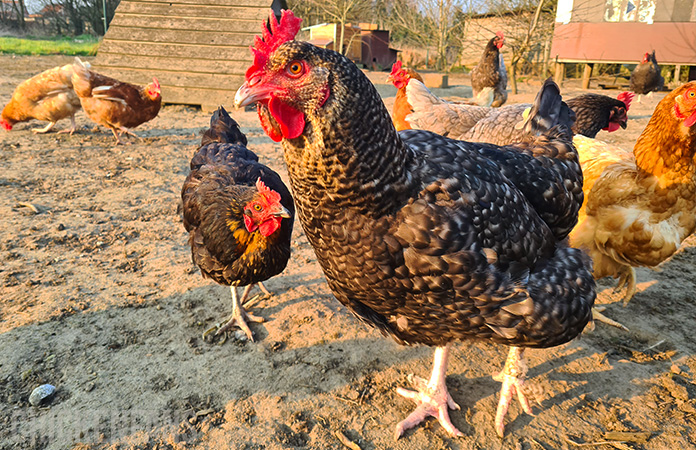
Laying hens fed high doses of D3 can lay eggs with higher vitamin D3 content because they deposit excess D3 into the egg yolk; however, its use in hen feed is still controversial in terms of human vitamin D consumption through eggs.
Vitamin D3 is also critical for skeletal development, preventing osteomalacia. This medical condition softens the keel and leg bones and causes several other skeletal problems.
In general, vitamin D protects laying hens against immunological stress by regulating the activity of specific types of immune cells known as T and B cells.
Vitamin D for Meat Chickens and Large Fowl
High vitamin D3 levels in the diet can help avoid tibial dyschondroplasia, a condition causing the loss of chondrocytes or cartilage cells in the bone’s growth plate in fast-growing chickens.
These effects are also important for fast-growing, large-legged chickens, such as giant Malays or other similar game fowl. They have large beaks, big skulls, and giant skeletons and the legs of young chickens already need to carry heavy weights.
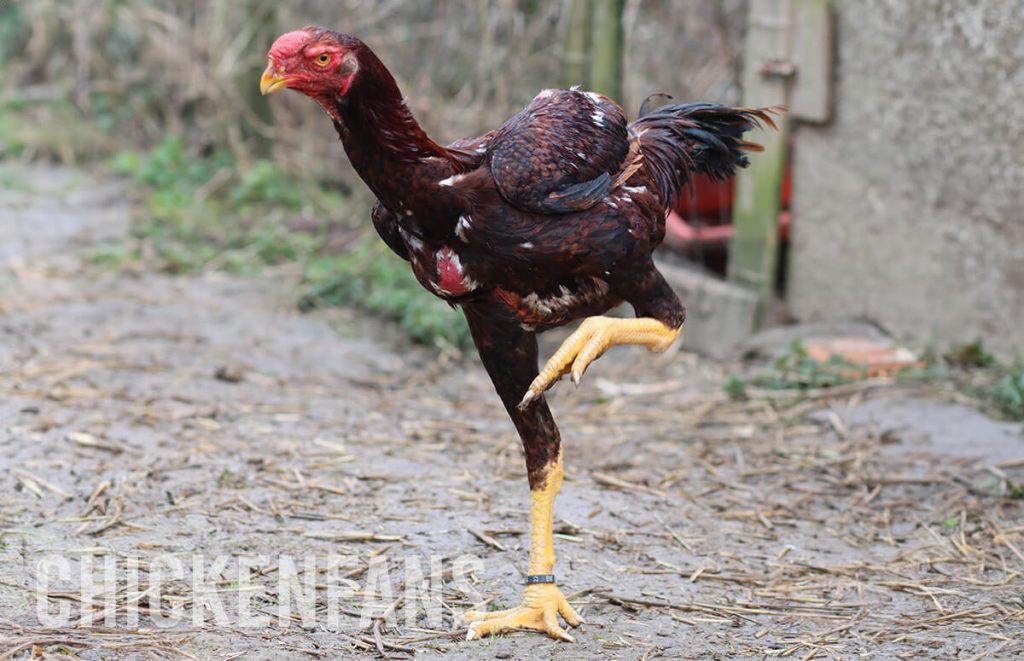
For broiler chickens, supplementing the correct vitamin D3 needs in their diets up to 14 days of age, can prevent the disease and strengthen the cortical bone.
Vitamin D for Chicks & Breeder Chickens
While Vitamin D does not affect egg yolk color, it certainly does impact the quantity of egg yolk and the amount of vitamin D available for the developing chick.
Before a chick hatches, it needs to build strong bones. To do this, it takes calcium from its eggshell.
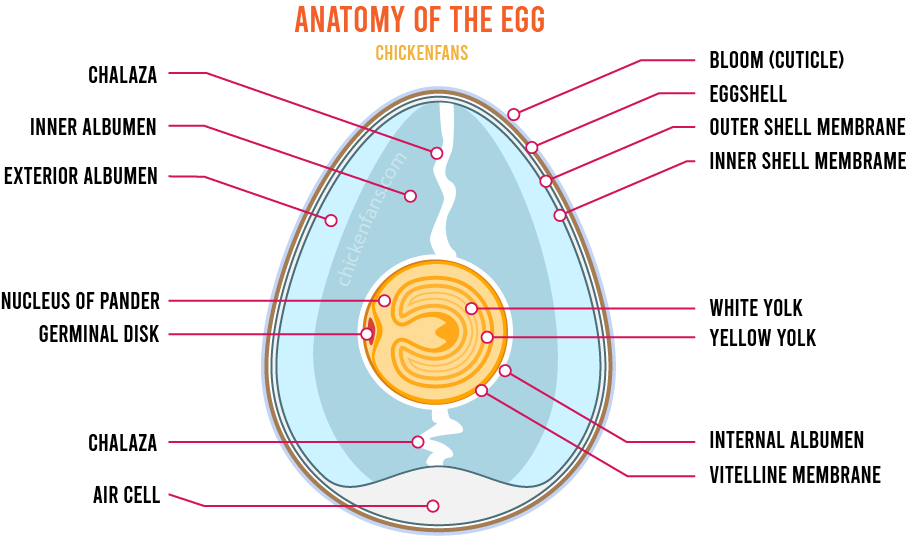
The calcium from the eggshell is first absorbed by the chorioallantoic membrane, a specialized structure full of blood vessels that’s part of the chick’s own embryonic system.
Some of this calcium is then transferred to the yolk. This transfer is facilitated by a specific form of vitamin D, known as 1,25-dihydroxyvitamin D. It’s the major metabolite.
Finally, the calcium goes into the chick’s system, where it’s used for bone mineralization.
Is it Possible to Get a Vitamin D Overdose?
Yes, chicks and chickens can overdose on vitamin D, which results in hypervitaminosis and toxicity.
Because vitamin D is a fat-soluble vitamin, it is frequently stored in fatty tissues and the liver when not needed; thus, it tends to accumulate in the body and increase its concentration.
A toxicosis is characterized by high levels of 1,25-dihydroxyvitamin D, hypercalcemia, and soft tissue mineralization, which can cause leg difficulties in growing birds due to bone calcium loss.
Growing and broiler chicks can exhibit anorexia, diarrhea, gradual emaciation or weight loss, dehydration, weakness, and trouble moving.
In hens, hypervitaminosis D may result in:
- Depression in performance: laying fewer eggs, or the quality can be poor
- Shell resorption: eggshells may become weak or thin because the excess vitamin D causes the calcium that would normally go into making strong eggshells to be reabsorbed back into the hen’s body
- Enhanced bone mineralization: bones might actually become too hard or mineralized due to the excess calcium being directed there, which is not a healthy state either.
The problems don’t stop with the mother hen. If an egg is fertilized, the excess vitamin D can also affect the developing chick inside the egg, potentially causing similar health issues as seen in the mother.
Metabolism and Active Forms
Vitamin D is required for chickens to utilize calcium successfully. Following absorption, the vitamin is converted in the liver into 25-hydroxycholecalciferol (25(OH)D3) and then in the kidneys into its active metabolite, 1,25-dihydroxyvitamin D [1,25(OH)2D].
This metabolite appears to have the largest influence because it stimulates the creation of calcium-binding proteins in the intestine, kidney, and uterus.
Commercially accessible forms of vitamin D for hens include vitamin D3, 25-OH vitamin D3, 1-alpha-OH vitamin D3, and 1,25(OH)2D3.

Dr. E. Rivera is a licensed veterinarian specializing in poultry and backyard chickens. She monitors different commercial broiler and layer farms and devises medication, vaccination, and biosecurity programs.
Related Articles
- Rooster Booster Poultry Cell: a broad spectrum vitamin, mineral, and amino acid supplement to boost chicken health when under stress
- Rooster Booster Vitamins & Electrolytes with Lactobacillus: a vitamin and electrolyte supplement that also contains probiotics
- Calcium for Chickens: Calcium is essential for chickens as it’s vital for egg production, controls heart rate and blood clotting, promotes a healthy nervous system, supports growth and development, boosts bone strength, activates digestive enzymes, and regulates the body’s pH.
- Probiotics for Chickens: probiotics are natural supplements with live microorganisms found in the chicken’s digestive system. They promote a healthy gut, boost the immune system, egg laying, and prevent viral and bacterial diseases.
- Vitamin K for Chickens: vitamin K is a group of 3 chemicals essential for blood clotting, biosynthesis of proteins, bone composition, and embryo development in chickens and poultry.
- Vitamin B12 for Chickens: Vitamin B12 is an essential vitamin for chickens that plays a core role in many vital body processes.



